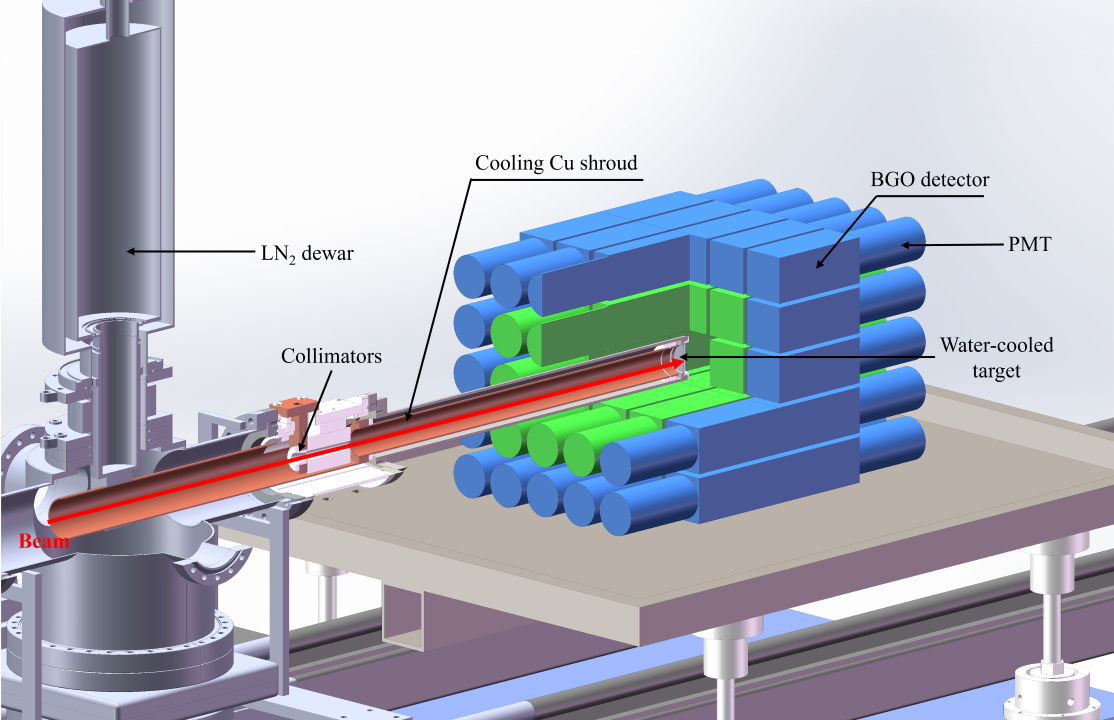Speaker
Description
In thermonuclear reactions of nuclear astrophysical interest, some can produce short-lived products that emit positrons. These positrons will annihilate with electrons in the target and then produce a pair of 511 keV γ-rays, which can be used to determine the reaction yield and calculate the cross-section as well as the astrophysical S-factor. We leverage the back-to-back characteristic of 511 keV γ-ray pairs, utilizing the opposite units of the autonomously developed large modular BGO detector array LAMBDA-II for spatial coincidence measurements of positron radioactive products. The array currently supports two spatial coincidence modes: the first mode employs the front eight and rear eight modules of the inner layer for positron annihilation coincidence measurements, while the second mode uses the eight detectors directly facing the target in the inner layer, divided into four groups in symmetrical directions, for positron annihilation coincidence measurements. In both modes, the 32 modules in the outer layer serve as anti-coincidence detectors to suppress environmental background. The first mode boasts high detection efficiency, while the second mode offers a superior signal-to-background ratio. The detection efficiency of the LAMBDA-II array for in situ $β^+$ decay of reaction products aligns with Monte Carlo simulation results. The in situ measurement of the 259 keV resonance yield from the $^{14}N(p, γ)^{15}O$ reaction matches the prompt γ-ray measurement, thoroughly validating the reliability of this method.

